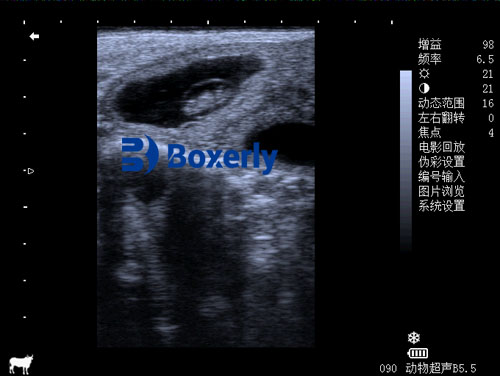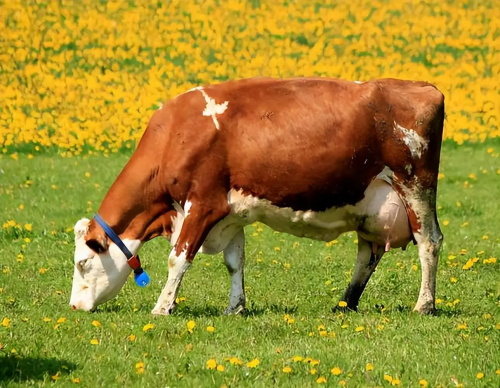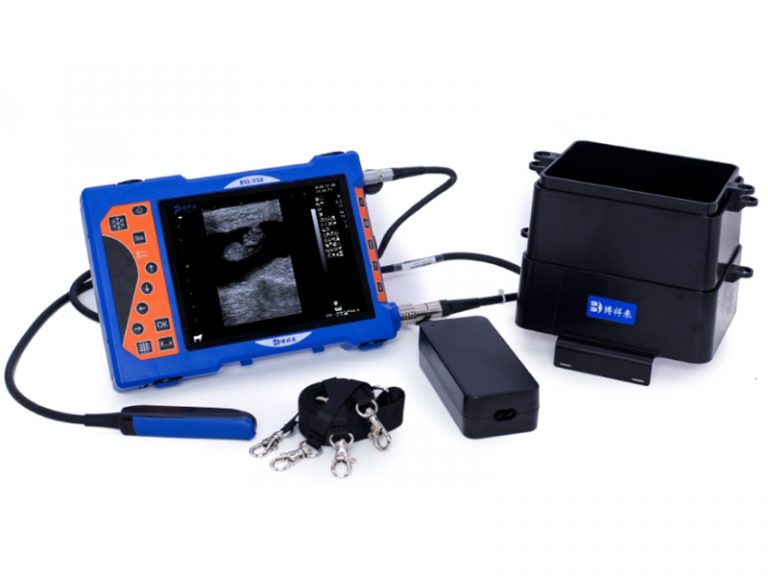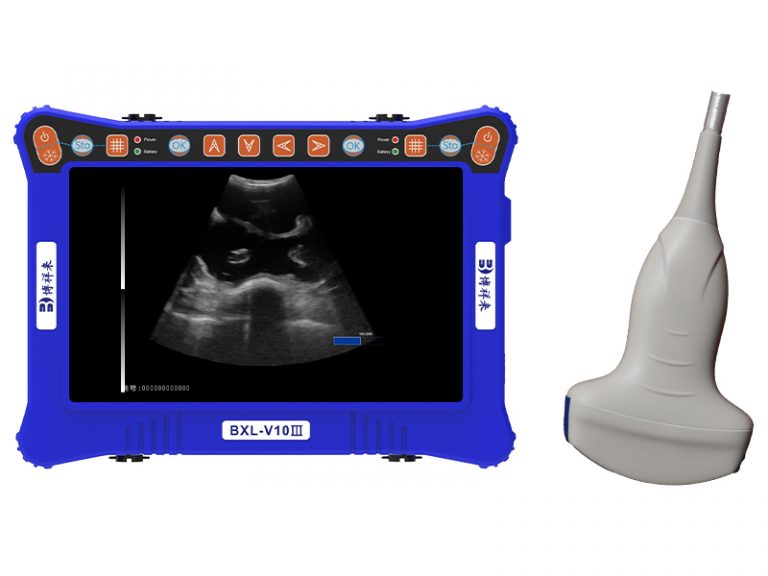Impact of Ultrasound Pregnancy Tools on Genetic Selection Strategies in Beef Herds
In modern beef cattle operations, maximizing productivity and genetic progress relies on two key components: efficient reproductive management and accurate evaluation of carcass and growth traits. Among the diagnostic technologies that bridge these domains, ultrasound, especially real-time B‑mode ultrasound, has become a cornerstone tool. Globally recognized for its non-invasive nature and precision, ultrasound allows farmers and veterinarians not only to confirm pregnancy but also to measure backfat thickness, ribeye area, and intramuscular fat. These measurements feed directly into genetic selection strategies—particularly via Expected Progeny Differences (EPDs)—and ultimately influence both performance traits and herd adaptability.

This article explores:
-
How ultrasound is used for pregnancy detection and early reproductive evaluation.
-
Ultrasound’s role in assessing carcass and growth traits under live-animal selection programs.
-
The impacts on genetic selection strategies from international perspectives.
-
The advantages of portable ultrasound units like the BXL‑V50 in modern herd management.
-
Integration of ultrasound data into broader genetic and genomic breeding programs.
-
Practical challenges and future directions in ultrasound-assisted breeding.
1. Ultrasound for Reproductive Management
Early Pregnancy Detection
In many beef systems, early identification of pregnancy status determines nutritional and reproductive management decisions. Modern ultrasound tools allow detection of pregnancy as early as 30 days post-conception, vastly improving upon palpation-based methods. For example, farms in Anhui and Gansu, China reported that using the BXL‑V50 unit enabled highly accurate early pregnancy diagnosis—about 96% success—compared to ~78% before implementation. This helps reduce calving intervals and eliminate late-breeding animals quickly.
Health Screening of Reproductive Organs
Ultrasound devices like the BXL‑V50 also detect reproductive tract conditions—such as cysts, uterine infections, and ovarian abnormalities—before they impact fertility. Such early detection fosters timely veterinary intervention and optimizes breeding success, reducing veterinary costs by an estimated 15% at Gansu Beef Farm. Internationally, reproductive scanning is standard in well-managed herds to support reproductive and genetic selection strategies.
2. Carcass and Growth Trait Evaluation
Ultrasound of Muscle and Fat Traits
Ultrasound isn’t limited to reproductive uses—it’s also essential for assessing carcass-relevant traits:
-
Ribeye (Longissimus dorsi) area
-
Backfat (subcutaneous fat) at the 12–13th rib and rump
-
Intramuscular fat (marbling) percentage
These traits can be reliably measured on live animals. University of Missouri Extension highlights the use of real-time ultrasound for carcass evaluation, noting its safety and utility in selection.
Heritability and Genetic Correlations
Research from New Zealand involving 4,473 beef cows and progeny shows that ultrasound traits are moderately to highly heritable (heritability h² ≈ 0.28–0.58) and strongly genetically correlated (r_g ≈ 0.53–0.95) with carcass traits at slaughter. Producers can therefore use ultrasound-derived EPDs to accelerate genetic gain.
However, selection for lean carcass traits must be balanced to avoid negative impacts on maternal performance—for example, excessive lean genetics could lower mature cow weight or body fat reserves. In international breeding programs, this balance between finishing and maternal traits is a central consideration.

3. Genetic Selection: International Perspectives
USA: Seedstock and Carcass EPDs
In the U.S., seedstock producers increasingly rely on ultrasound-based EPDs to select bulls and replacement stock with superior carcass traits. The Nebraska and Georgia studies verified that breeding values derived from ultrasound scans effectively predict progeny performance.
Still, ultrasound EPDs should be integrated with other selection criteria—such as fertility, health, and temperament—to support genetic progress without negative side effects.
New Zealand: Balancing Maternal and Finishing Traits
New Zealand’s “hill country” system relies heavily on pasture and low inputs, making efficiency and longevity key goals. The genomic research confirmed that while carcass ultrasound traits can be selected effectively, ignoring maternal traits risks reduced cow condition and reproductive success.
Genomic Integration
Genomic selection—using dense SNP panels and embedding ultrasound phenotypes—offers greater accuracy in breeding value estimation. Despite earlier limitations, the combination of genotypes with trait phenotypes, especially from ultrasound, now supports improved prediction for complex traits like fertility, feed efficiency, and resilience .
4. Portable Ultrasound Tools like BXL‑V50
Device Features
The BXL‑V50 is a rugged, portable ultrasound unit designed for on-farm use. Key features include:
-
8‑inch high‑definition LCD and adjustable sunshade
-
IP56 waterproof/dustproof rating
-
7+ hour battery life
-
Automatic backfat and eye muscle measurements
-
Multi-species presets and easy data storage

Field Advantages
Adoption at Anhui and Gansu beef farms illustrates profound benefits:
-
Increased pregnancy detection accuracy to ~96%
-
Faster fetal counts and reproductive diagnoses
-
Enhanced musculoskeletal, abdominal organ evaluations
-
Time savings and reduced need for external veterinary services
These on-farm scanning capabilities support a data-driven approach to genetic selection and herd management, aligning performance measurement with breeding goals.
5. Integrating Ultrasound into Breeding Strategies
Establishing Genetic Evaluation Programs
A robust genetic selection program includes:
-
Routine ultrasound measurement of carcass and fat traits
-
Recording pregnancy status and reproductive organ health
-
Genomic testing alongside phenotypic records
-
Inclusive breeding indices that combine carcass, fertility, longevity, and health traits
This multi-dimensional h approach allows producers to make informed choices based on both phenotype and genotype.
Economic and Biological Outcomes
Producers reap clear benefits:
-
Faster genetic progress for carcass traits
-
More efficient feed use and resource allocation
-
Earlier and more effective culling of non-pregnant or low-value individuals
-
Improved herd health and welfare
Studies confirm that ultrasound-driven selection boosts profitability and genetic gains.

6. Challenges and Future Directions
Training and Data Quality
Effectiveness depends on proper operator training and consistent scan quality. The Chinese case studies mentioned an initial learning curve that was overcome with staff education.
Balancing Genetic Traits
Selecting for carcass traits must be carefully balanced with maternal, fertility, and health traits to avoid unintended trade-offs. Selection indexes help optimize this balance.
Advanced Phenotypes
Beyond standard ultrasound metrics, traits like feed efficiency, disease resilience, temperament, and environmental adaptability are becoming more relevant to breeding. Genomic data, combined with on-farm ultrasound, enables inclusion of such traits in selection indices .
Smart Technologies
Future trends include real-time data analytics, cloud-based animal monitoring, automated phenotyping, and AI-assisted scan interpretation—improvements that will enhance accuracy and adoption.
Conclusion
The integration of ultrasound pregnancy tools into beef cattle systems has revolutionized genetic selection strategies:
-
Reproductive Management: Early, accurate pregnancy detection supports breeding efficiency and nutrition management.
-
Carcass Trait Selection: Live-animal scans inform EPDs for backfat, ribeye, and marbling, driving genetic gains.
-
Portable Devices: Units like the BXL‑V50 provide reliable performance and ease of use, even in field conditions.
-
Global Integration: Across nations, ultrasound data is used in genetic programs to balance finishing traits with maternal health.
-
Future Innovation: Genomics, advanced phenotyping, and smart analytics will further enhance the value of ultrasound in herd improvement.
By leveraging ultrasound tools effectively, beef producers worldwide can make well-informed breeding and management decisions, leading to higher productivity, better animal welfare, and stronger economic outcomes.
References
-
Weik F. et al., “Genetic Parameters for Growth, Ultrasound and Carcass Traits in New Zealand Beef Cattle…” Animals (Basel), 2022, DOI:10.3390/ani12010025. URL: https://doi.org/10.3390/ani12010025
-
Herring W., “Real‑Time Ultrasound: Possible Uses in Genetic Prediction,” Univ Missouri Ext, 2007.
-
MS State Extension, “Using Live Animal Carcass Ultrasound Information in Beef Cattle Selection.”
-
PubMed – Genetic Parameters study.
-
Boxianglai (BXL‑V50 technical specifics and case studies: Anhui, Gansu farms).





